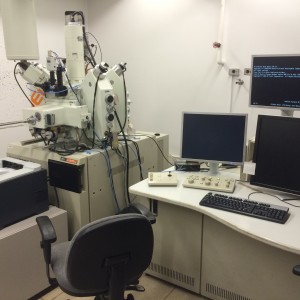
As Benjamin Franklin once said, “An investment in knowledge pays the best interest.” And indeed, funding and supporting research projects is a priority for Princeton as well as many other institutions. But just because our society values research, it doesn’t mean that it’s a walk in the park to get a project funded. In fact, in many cases, it’s actually very difficult to get a project funded, even if it’s a highly worthwhile one.
However, this doesn’t mean that your chances of getting funding are beyond your control – the better your funding proposal, the better your chances are of getting your project fully funded. Of course that’s beyond obvious, but how exactly do you write a well-executed funding proposal? Below are a few tips that I’ve picked up:
First, know your project. If you don’t know your own project, you definitely won’t be able to convince someone else to pay for it. “Of course I know my own project. How rude,” I hear you say. But do you REALLY know your project? It’s easy to get caught up in the details of your research, such as the exact method you’re going to use, or the direct small-scale implications of your results. But I’ll admit that I sometimes hesitated to respond when someone asked, “Why do I care?” A graduate student once gave me a great analogy: as a researcher seeking funding, you’re essentially a salesperson trying to pitch a ‘product’ to a ‘customer.’ If you can’t tell your customer why he should care about your product, then it’s never going to sell. So make sure you completely understand the purpose of your research in the framework of a large-scale picture.
Second, communicate your project effectively. In many cases, your customer isn’t going to know the complicated jargon that underlies your project and/or the more complex aspects of the project itself. And of course it goes without saying, if your customer doesn’t understand you, he/she’s just not going to buy into your product, even if it’s the cure for cancer. So make sure your proposal is concise and clear, and have a friend in a department other than yours read it to make sure that a lay audience can also understand the importance of your work.
Third, work out the details. A great way to convince your customer that you’ve thought carefully about your project is to present the finer details of your work plan. Don’t just say, “I need money to use the electron microscope at MIT,” – tell them what samples you’re going to look at using the microscope, why you have to use the microscope at MIT as opposed to anywhere else, what information you will gain from using the scope, how that information will answer your hypothesis, when you plan to go to Boston… Not only will working out these details give you a better chance of getting funding, but it’s also useful for clarifying your own goals. But be careful – don’t overload your proposal with information. You need to strike a fine balance between being concise and being detailed.
Finally, get advice from those who are more experienced from you. Every discipline has its own, slightly nuanced way of doing things, and chances are that your professors and their graduate students have been writing funding proposals for a while. Help them help you by being proactive and asking for advice.
For those projects that require funding, the proposal is a critical part of your overall work. If you fail to get the support you require, there are undoubtedly going to be some major obstacles through your semester/year, so give it the attention it deserves. But, that being said, with some experience and advice there’s an excellent chance that you will get the funding that you need, and you’ll be well on your way to making important contributions to science.
– Yuem Park, Natural Sciences Correspondent

